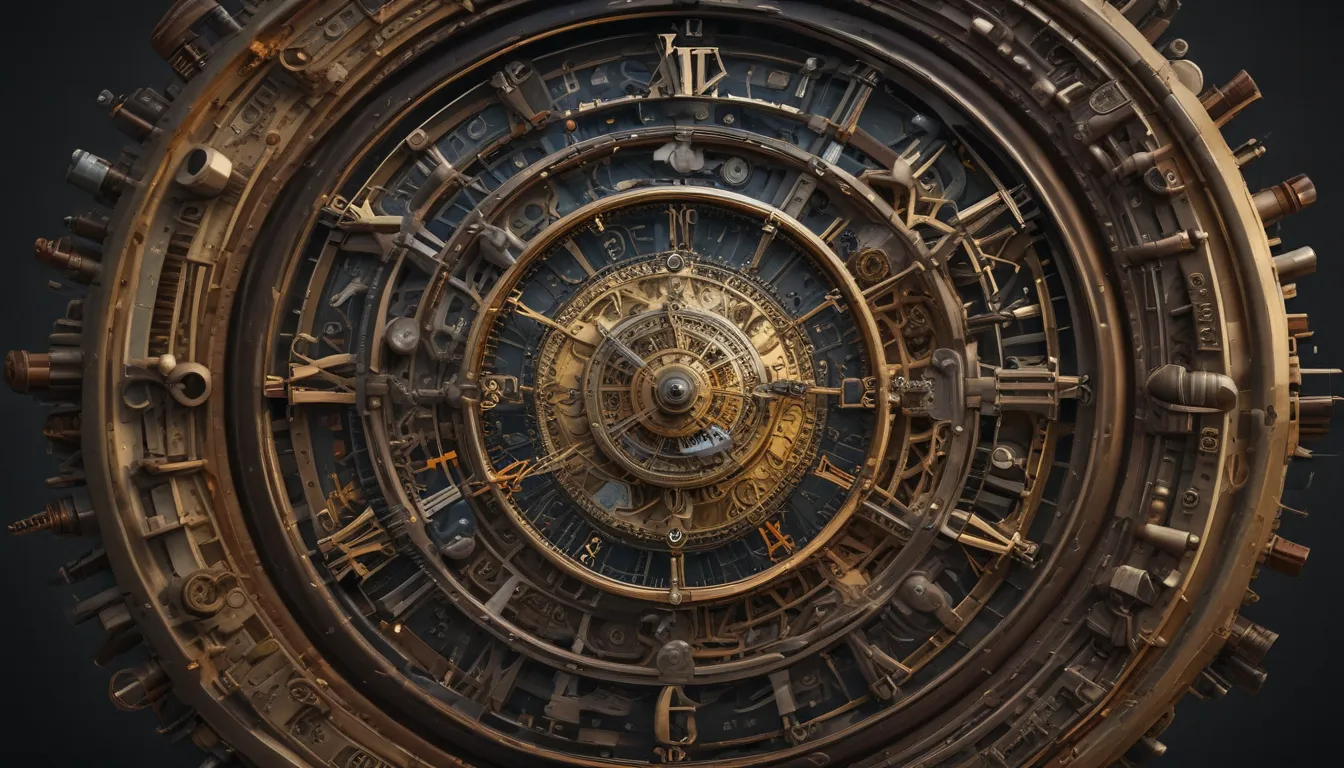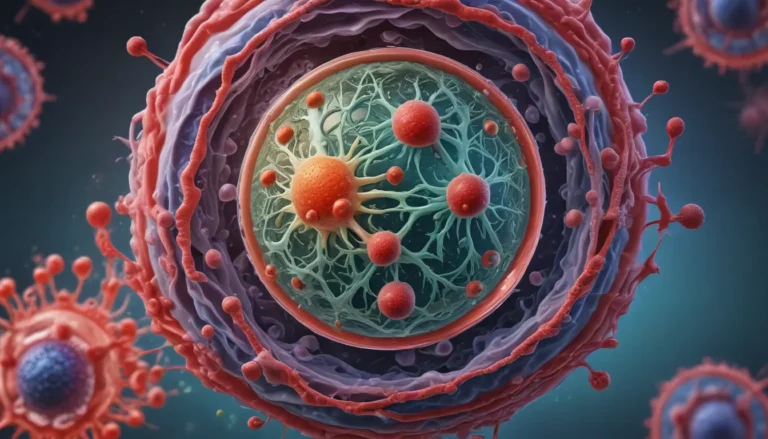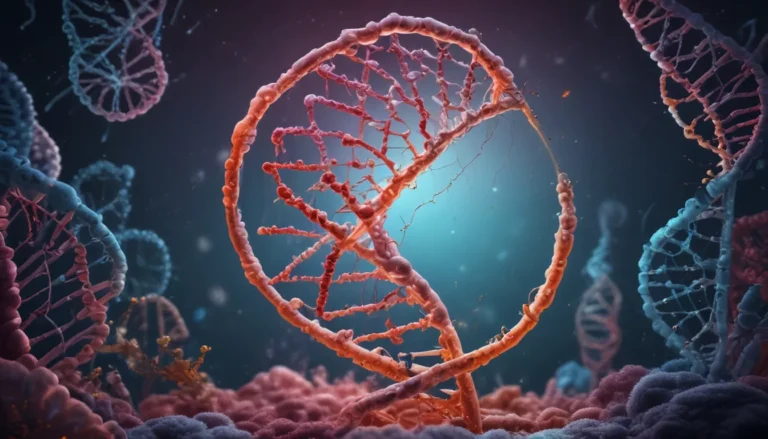A Note About Images: The images used in our articles are for illustration purposes only and may not exactly match the content. They are meant to engage readers, but the text should be relied upon for accurate information.
The world of clocks extends beyond the devices we use to keep track of time in our daily lives. Welcome to the realm of molecular clocks, fascinating biological mechanisms that delve into the evolutionary history and relationships between species. These unique timekeepers utilize changes in DNA sequences and genetic mutations to estimate the timing of crucial evolutionary events in the intricate world of biology. Join us as we explore 14 surprising facts about molecular clocks, from their discovery to their applications in various fields of study.
Exploring the Power of Molecular Clocks
- Molecular clocks help scientists estimate when different species shared a common ancestor, providing insights into evolutionary timelines and the history of life on Earth.
- By analyzing DNA mutations, molecular clocks have revolutionized our understanding of human evolution, ancient migration routes, and the spread of diseases, shaping our knowledge of the world’s history.
Unraveling Evolutionary Timelines
Molecular clocks serve as powerful tools used by scientists to estimate the timing of evolutionary events. By comparing the DNA sequences of different species, researchers can infer how long ago they shared a common ancestor. This helps us understand the timelines of species divergence and evolution.
DNA Mutation Rates and Molecular Clocks
The foundation of molecular clocks lies in the concept that DNA accumulates mutations over time. By measuring the number of differences in DNA sequences between species, scientists can estimate the time since their common ancestor. The mutation rate varies across different genes and organisms, allowing for accurate estimations of evolutionary timeframes.
Evolutionary Insights from Human Evolution
Molecular clocks have provided valuable insights into our own evolutionary history. By analyzing genetic markers, scientists have determined that humans and chimpanzees share a common ancestor around 6 to 8 million years ago. This knowledge has reshaped our understanding of our place in the primate family tree.
The Impact of Natural Selection
While molecular clocks are essential tools, it’s crucial to consider that natural selection can impact their accuracy. Certain genes may experience selective pressures that accelerate or decelerate the mutation rate, leading to variations in molecular clock estimates. Scientists take this into account when interpreting the results.
Tracing Ancient Events and Human Migrations
Molecular clocks not only provide insights into the timing of species divergence but also offer clues about ancient events. By comparing the DNA of different populations, scientists can determine when human migrations took place, such as the peopling of different continents or the colonization of remote islands.
Tracking Disease Spread with Molecular Clocks
By analyzing the genetic material of pathogens, scientists can use molecular clocks to understand the origin and spread of diseases. This information is crucial for developing strategies to prevent and control outbreaks. Molecular clocks have played a significant role in studying the evolution and transmission dynamics of viruses like HIV and influenza.
Revealing Unexpected Species Relationships
Molecular clocks have led to surprising discoveries regarding the relationships between different species. For example, genetic analysis has shown that birds are more closely related to dinosaurs than previously thought. These unexpected connections highlight the power of molecular clocks in unraveling the mysteries of evolution.
Studying Genes Evolution with Molecular Clocks
Molecular clocks are not limited to studying the evolution of species. They are also used to understand how genes evolve over time. By comparing the DNA sequences of genes within a species or between closely related species, scientists can uncover the mechanisms behind genetic changes and adaptations.
Tracing Ancient Migration Routes
By analyzing the DNA of human populations around the world, scientists can use molecular clocks to trace ancient migration routes. This has provided insights into the peopling of continents and the movement of early humans across the globe.
Enhancing Accuracy with Fossil Evidence
To improve the accuracy of molecular clock estimates, scientists often use fossil evidence to calibrate the timing of evolutionary events. Fossils provide valuable information about the age of certain species, allowing researchers to refine their molecular clock calculations.
Shedding Light on Extinct Species
Although molecular clocks primarily rely on DNA analysis, they can also be applied to extinct species. By extracting and analyzing DNA samples from ancient remains such as bones or teeth, scientists can estimate the timing of evolutionary events in extinct lineages, shedding light on their history.
Rewriting Human History with Molecular Clocks
By analyzing the genetic diversity of human populations and comparing it to molecular clock estimates, scientists can gain insights into the age of ancient civilizations. This interdisciplinary approach combines genetics, archaeology, and history to paint a more comprehensive picture of human history.
Tracing Life’s Origin with Molecular Clocks
Studying the genetic material of organisms across different domains of life allows scientists to use molecular clocks to trace back the origins of life on Earth. These analyses have revealed information about the last universal common ancestor (LUCA), the hypothetical organism from which all life on Earth descends.
Evolution of Molecular Clocks
The field of molecular clocks is constantly evolving with new techniques and advancements. Scientists are refining their methods, improving accuracy, and expanding the applications of molecular clocks in various areas of research, including medicine, conservation, and evolutionary biology.
Conclusion
In conclusion, molecular clocks serve as fascinating tools that allow scientists to understand the timing of evolutionary events. Through the study of genetic mutations and the comparisons of DNA sequences, researchers can estimate the divergence times between species and reconstruct their evolutionary history. The 14 surprising facts about molecular clocks discussed in this article shed light on the intricacies and complexities of these timekeeping mechanisms. From the discovery of clock-like genes to the influence of environmental factors on molecular clock rates, these facts highlight the ongoing research and advancements in the field of molecular clocks. Understanding the limitations and assumptions of these clocks is crucial to their accurate application, and scientists continue to refine and improve upon them. With molecular clocks, scientists can unlock the mysteries of evolutionary timelines and gain insight into the patterns and processes that have shaped life on Earth. As our understanding deepens, molecular clocks will undoubtedly continue to play a vital role in the study of biology and the unraveling of life’s evolutionary history.
FAQs
- What are molecular clocks?
-
Molecular clocks are tools used by scientists to estimate the timing of evolutionary events, based on the observation that genetic mutations occur at a relatively constant rate over time.
-
How do molecular clocks work?
-
Molecular clocks work by measuring the number of genetic differences between species. By comparing DNA sequences, scientists can estimate the time since two species shared a common ancestor.
-
Are molecular clocks always accurate?
-
No, molecular clocks have limitations and assumptions that can introduce errors. Factors such as variation in mutation rates and evolutionary processes can affect the accuracy of molecular clock estimates.
-
Can molecular clocks be used to study human evolution?
-
Yes, molecular clocks have been utilized to study the evolution of humans and our closest relatives. By comparing DNA sequences, scientists have estimated the timing of major events in human evolutionary history.
-
Do molecular clocks work for all organisms?
-
Molecular clocks can be used for a wide range of organisms, from bacteria to plants and animals. However, the accuracy of molecular clock estimates can vary depending on the genetic data available and the specific characteristics of the organism being studied.
-
Can molecular clocks provide absolute dates?
-
No, molecular clocks provide relative estimates of divergence times. They cannot provide absolute dates but rather offer insights into the order and timing of evolutionary events.
-
How do environmental factors affect molecular clocks?
-
Environmental factors, such as changes in temperature and population size, can influence the rate at which genetic mutations occur. This variation in mutation rates can impact the accuracy of molecular clock estimates.
-
Are molecular clocks used in fields other than evolutionary biology?
-
Yes, molecular clocks are also used in fields like epidemiology, where they help track the spread and evolution of diseases by estimating the time of transmission between individuals or populations.
-
Can molecular clocks be used to study ancient species?
-
Yes, molecular clocks can be used to study ancient species by analyzing DNA from fossils. This allows scientists to estimate the timing of evolutionary events in extinct lineages.
-
Are the rates of molecular clocks constant for all genes?
- No, the rates of molecular clocks can vary between different genes. Some genes may evolve more rapidly, while others may be more conserved, leading to different rates of genetic change.
Uncover the fascinating world of molecular clocks and bioinformatics as we delve deeper into the incredible ways they are reshaping our understanding of the natural world. Trust in our commitment to quality and authenticity as you explore and learn with us.






